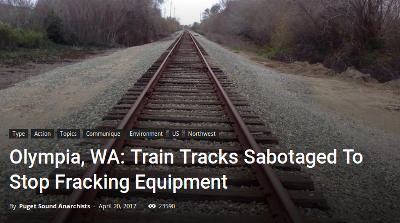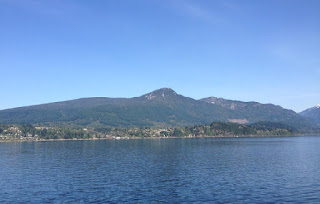tripods, lockboxes. Sure, all these tactics can be effective in certain
situations. But when we consider the scale of the problem, they are lacking. These
tactics do not generally lead to decisive outcomes. They can shape conditions
and help lead to victory, but alone they are almost never sufficient.
our goal. Our goal is to stop the global industrial economy that is killing the
planet. As such, a prime consideration is attrition—on our side. When people
are arrested with every action, our losses—time, money, energy—add up quickly.
People get burned out.
applying guerilla tactics to the battle for the planet. These tactics can be
adapted for non-violence, or carried out in a decisive ecological warfare
style. Hit and run blockades allow us to inflict maximum economic and moral
damage without taking losses.
to “hit and sit”—waiting for the police to come arrest them. This approach can
lend a certain moral weight in the courtroom, and there’s a time and a place
where it’s probably the most effective method.
resources. If you only have a few people willing to be arrested, your actions
can only take place on a small scale. Consider, instead, what you could
accomplish with the same small group of people acting clandestinely.
with existing aboveground movements. For example, hit and run tactics will be
most effective where people can advocate for, justify, and explain the actions
within a greater narrative of resistance to coal, oil, gas, and the broader
industrial ecocide of the planet. To mitigate media demonization and police
crackdowns, the story of this resistance has to be as powerful as the actions
themselves.
soft blockades that are easily broken up and leave people broke and in prison,
hundreds or thousands of blockades taking place all around the country, and the
world. Small teams striking like ghosts, interdicting commerce, halting
logging, dams, fracking, coal trains, and more, then disappearing only to
strike again the next day, and the next, and the next.
Even if these tactics were broadly adopted, they
wouldn’t be enough to save the planet. Ultimately, we call for decisive ecological warfare. However, in the near-term, such escalation in non-violent
resistance would push our movements in a better direction: more strategic, more
creative, more serious, more security-aware, more clandestine, more decisive.

 Our
Our 




